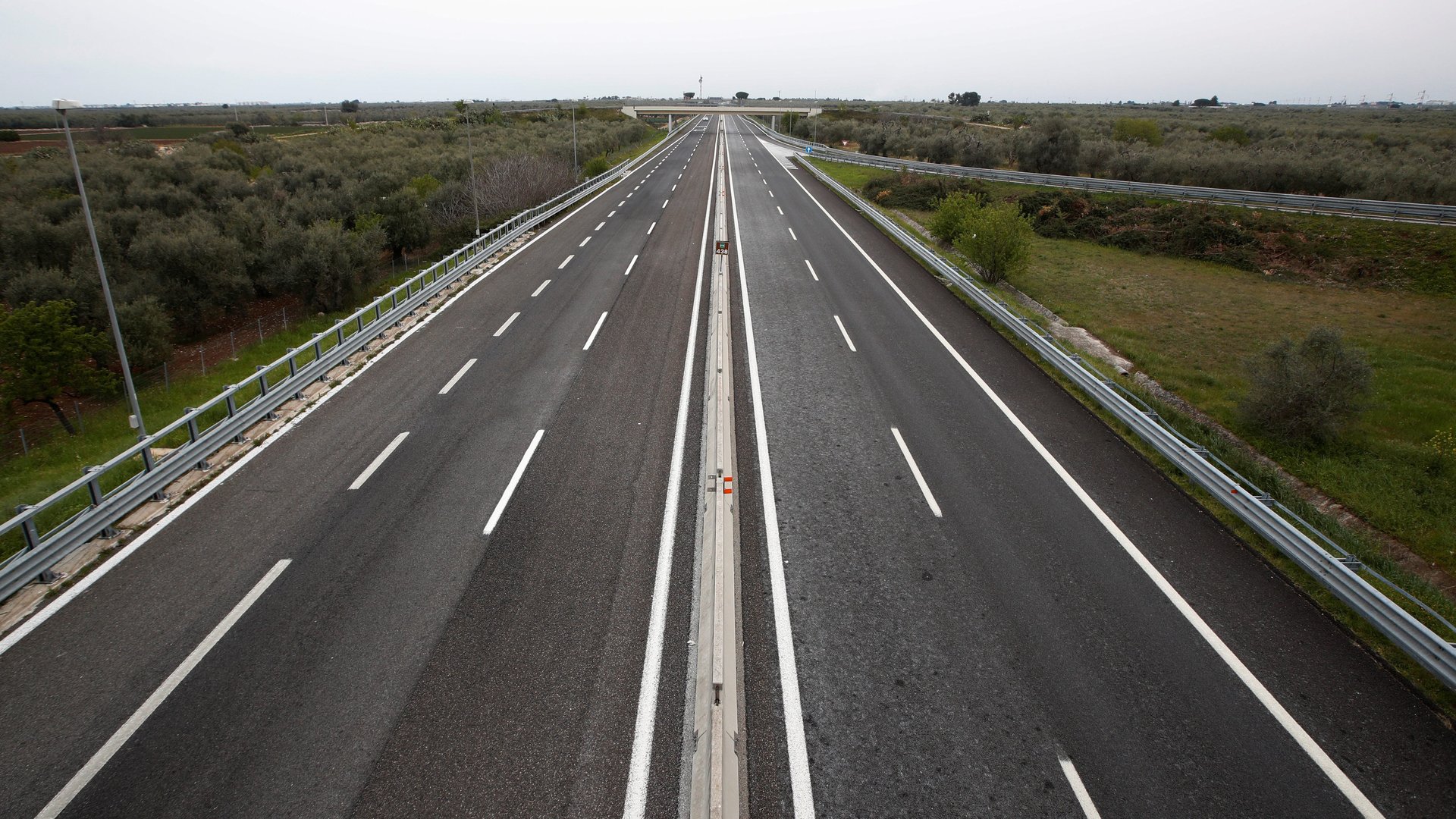The coronavirus has Americans driving like it’s 1999
America’s roads are a lot more open these days.


America’s roads are a lot more open these days.
In March, 32 states issued stay-at-home orders asking residents to restrict their movement or limit travel to essential needs. They listened. The number of vehicle miles traveled in March fell 18.6%, roughly equivalent to 50.6 billion vehicular miles, compared to the same period last year, according to US Department of Transportation data.
Yonah Freemark, an urban studies PhD candidate at MIT, reports that the steepest declines came in three New England states of Vermont, Connecticut, and Massachusetts, which posted roughly 25% declines. The smallest drops of 10% or less were in largely rural states such as Wyoming, Oklahoma, Montana, and Maine. This trend aligns roughly with Google’s state-by-state mobility reporting using mobile phone data (pdf).
April’s data isn’t in yet, but a steeper drop is likely since more states have now imposed stay-at-home orders, from Nevada to South Carolina.
This summer will likely see a rebound in miles clocked, even before restrictions are lifted. According to the Institute for Health Metrics and Evaluation at the University of Washington, travel increased by 20% or more in five states (Montana, North Dakota, Minnesota, South Dakota, and Georgia) in recent weeks, and more modest increases were detected in 13 other states.
Massachusetts’ transportation secretary attributed the growing car travel to “quarantine fatigue.” The recent uptick in movement began before most states had lifted social distancing policies, according to IHME. “Unless and until we see accelerated testing, contact tracing, isolating people who test positive, and widespread use of masks in public, there is a significant likelihood of new infections,” said IHME director Christopher Murray in a statement.